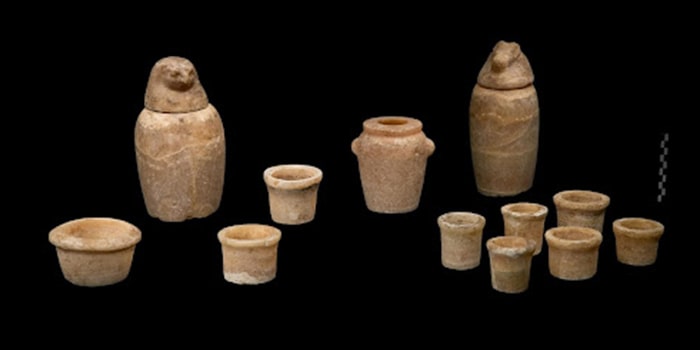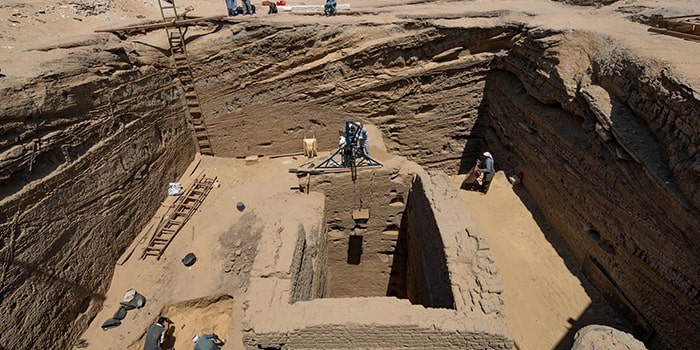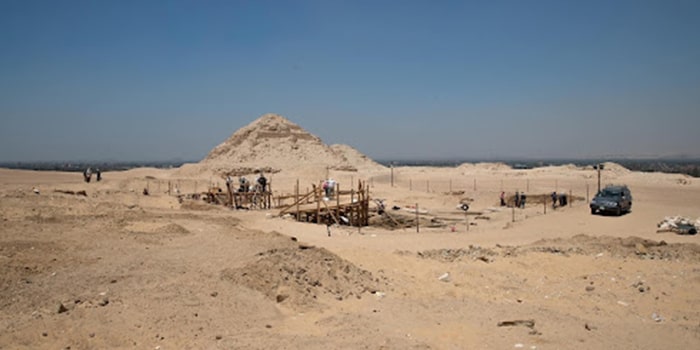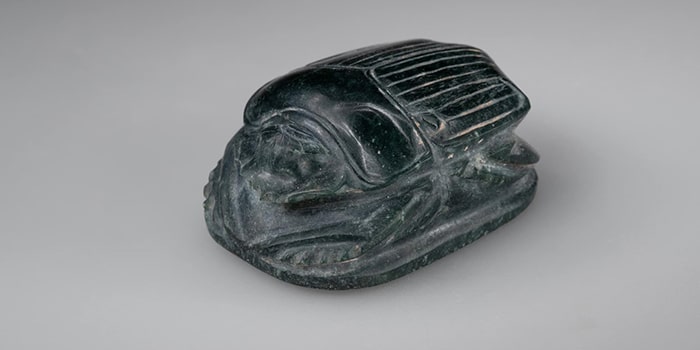The importance of this discovery
Dr. Waziri, the General Secretary of the Egyptian High Institute of Antiquities, declared that the tomb consists of a principal well of 6m depth,
And 14m X 14m of dimensions. The well is divided into many parts with stone bridges to join these parts. In the middle of the principal well, another small one was dug deeper and used as the burial room for the dead general. The small well has dimensions of 6.5 X 3.3m.
Dr. Waziri added that the discovered tomb has no typical similarities even if its design can be compared with Wdj Hor Rsnet's tomb, which was also engraved in the rock and was discovered recently.
What was discovered in the tomb?
Dr. Mareslav Perta, the Czeck mission head, declared that in the lowest part of the well, at about 16m deep, they discovered double sarcophagi, the big one consisting of 2 big blocks of limestone, slightly damaged and covered with sand. Inside of this one, another human-shaped sarcophagus is made of basalt stone. On its upper part are inscriptions from Chapter 72 of "The Book of Death," the part that describes the dead's second life and his trip to the other world. The Basalt Sarcophagus is 2.3m in length and 1.98m wide.
Dr. Perta continued: "The Basalt sarcophagus interior was empty except for a scarab for the heart with no inscriptions but engraved with high accuracy, and a headrest amulet. We didn't find a lot of funeral furniture but a little on the east and west sides of the sarcophagus.
On the east side, there were 402 Oushapti statues (Oushapti is a small statue depicting the tomb's owner, and these statues made all the work in the other world instead of the dead.) There were also 2 alabaster
Canopic Jars, the maquette of an offering table, ten symbolic glasses, and a limestone Ostraca with hieratic inscriptions written in black ink. The ostraca was very small; that's why the writer used brief extracts from the book of death; those are the converting texts to be sure the dead will have another life in the world of death.

Was the tomb robbed recently?
The primitive tomb's studies proved that it was robbed by the 4th or 5th century A.C.; this was verified by 2 pots of mud the robbers left in the tomb.
The robbers also made a hole in the sarcophagus' western part and destroyed its upper part that depicts the dead's face; the broken parts were found around the sarcophagus, Dr. Perta added.
The importance of the tomb's inscriptions
The Czech mission vice director, Dr. Mogahed declared that although we didn't find much in the Wah-Ib-Ra'a-Meri- Nit tomb, it's considered a unique discovery that presents the turbulent period and the beginning of Persian dominance. Also, the mummification documents found last year can give us an idea about Wah-Ib-Ra'a-Meri-Nit's style of life, family, and job details.
He probably unexpectedly died when his tomb and funeral furniture weren't ready yet.
On the other hand, the tomb's architecture and content provide us with invaluable knowledge about the funeral furniture and the inscriptions inside the tombs accompanying the dead to the other world.




